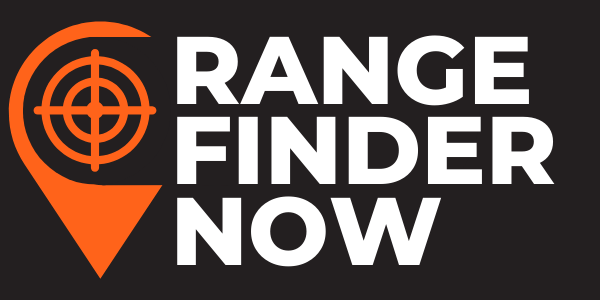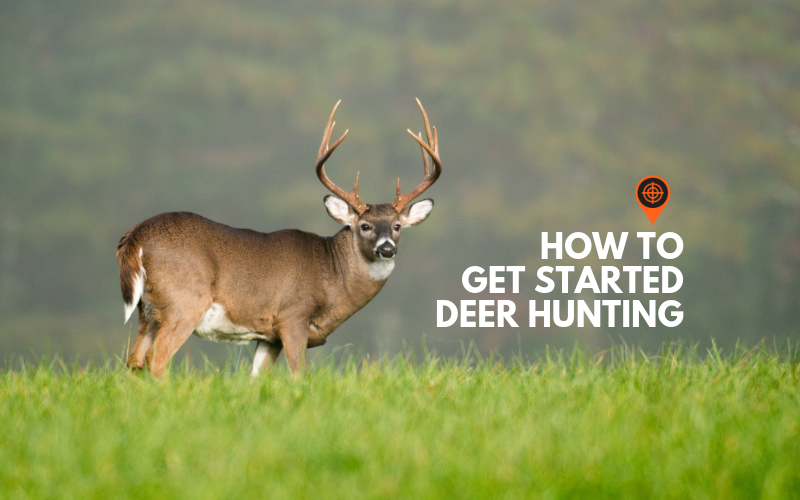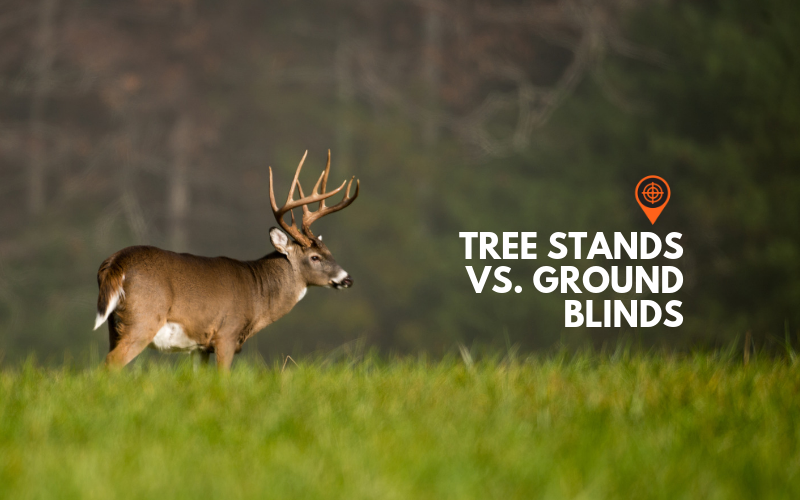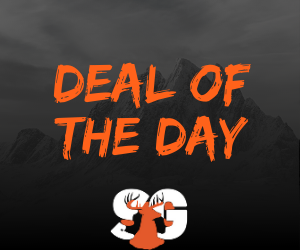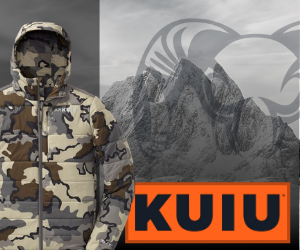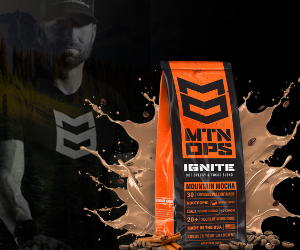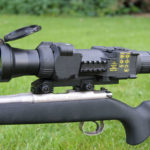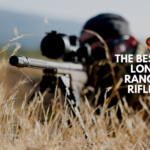It is by far my favorite time of the year, and it is right around the corner. The evenings start to get cooler, and the leaves start to change colors. Autumn means bonfires and football games.
It means epic Thanksgiving dinners and snuggling up with a blanket next to the fireplace. For my son Andrew and I it means scout meetings and campouts. It also means deer season.
Deer season has always been a very special time for me and my family. From the time I was just a toddler, my father would take me with him to deer camp in Southern Missouri. My uncle and his family along with my grandfather would meet there the day before opening morning. We would plot out our stands and set out our gear. Often, we would eat on last year’s venison as the adults oiled their rifles. Deer season meant putting great meat in the freezer, but for the child in me it is always just a huge rush.
We would wake up hours before sunrise to get dressed and eat a hearty breakfast. Then we would head out in the crisp early morning to head to our stands. Just the thought of it makes me start thinking about the huge buck I may take this season. Sitting in that stand, the sound of a deer stomping or snorting in the shadows always gives me chills. Watching them silently move through crisp leaves without cracking a twig always amazes me. My grandfather said they floated like ghosts through the forest.
This all may get your blood pumping, but not everybody has two generations of hunters to teach them how it works. My family was not great at bow hunting, so I had to teach myself. It took me years before I bagged my first deer with a bow. In this article, we will just touch on the specifics between firearm hunting and bow hunting. Primarily we will cover the basic principles of good deer hunting that are true for both. Hopefully, we will give you the tools and motivation to help you get out there this fall and bag a big one.
How To Get Started Deer Hunting
Deer hunting can be done in a number of ways. Whether you’re bowhunting for deer, using a rifle, shotgun, or a muzzleloader, there are no shortage of ways to get yourself into the field.
- Beginner Bow Hunting Checklist for Deer
- Beginner Rifle Hunting Checklist for Deer
- Beginner Muzzleloader Checklist for Deer
First off, scouting for deer
Selecting a location for your hunt is one of the most important steps and should always be your first. However, many hunters skip this step until opening morning. They just hop in the truck and drive around or walk through the woods hoping that they might cross paths with a monster buck. The best thing that you can do is to decide where you will hunt well in advance. I hunt on the same 750 acre farm every year, so that step is covered for me. If you are hunting on public land, you should scout well in advance to see if there is deer activity or if there are other hunters scouting that area.
The first step of scouting is just finding an area with a large amount of deer sign. Starting out you should focus primarily on deer scat and deer tracks. This means either does or bucks could be in the area. As you become more experienced, you will look for buck signs like rubs and scrapes to specifically target the males. Deer are creatures of habit and often travel the same path to water, food, and bedding every day. If you see deer sign, there is a good chance that you will see deer during hunting season.
Do watch out for tree stands or trail cams in the area which would indicate that other hunters plan to be there. Finally, trail cams of your own can help narrow the field down even further and let you see the deer in the area. You can get a better idea of how many deer are there, how often they visit, and how big they are. You now have a general area targeted.
The final step is determining a stand location. This should primarily be determined by visibility. If you are hunting with a gun, you want to be able to see a long way in every direction.
If you are hunting with a bow, you can at least cut that distance of visibility in half. Keep in mind your lines of sight are also determined by your height. If you are in a tree stand, you will typically have more visibility than if you are on the ground. Also make sure your stand will allow you to aim in the area of the most sign and will allow you to face in a direction that will not leave you blinded by the rising or setting sun.
Tree Stands versus Ground Blinds for deer hunting
Tree stands versus ground blinds for deer hunting should really be a topic in and of itself. There is quite frankly too much to cover when it comes to the two and most of it is situation based.
There are plenty of advantages and disadvantages to using a tree stand or staying in a ground blind. There are several reasons why people started climbing trees to hunt deer. The primary reason is related to the way a deer uses its eyesight in the forest. Deer have incredible eyesight, but there are limitations. All of the food they search for and the predators they try to avoid are at or below eye level. Unless you give them a reason, they will not look up in a tree. This means movements like drawing a bow or raising a rifle are not as likely to be seen. In addition, sitting higher up does give you more visibility. It can even help with your scent. While being up higher will not change your scent, it will make it more difficult for deer to pinpoint your exact location based on smell.
Ground blinds offer several advantages. If you buy or build the right ground blind, it will shield you from the view of a deer.
With the best ground blind for deer hunting, you can do the hokey pokey and the deer would never get spooked if you are quiet about it. Manufactured ground blinds are typically waterproof, so they work much better in the rain, the wind, or the snow. They can limit your visibility, but you do not have to climb 20 to 30 feet up in a tree. When I was younger, I always hunted in a tree stand. As I have gotten older, more and more I divide my time between the two options.
The right camouflage for deer hunting
Confusing the eyesight of the deer can be very important. This is the purpose of camouflage. Deer are excellent at spotting movement at long distances. They also identify solids object that are primarily the same color. In nature, nothing is entirely the same color.
However, they have issues with certain colors. Warm colors like reds, yellows, and oranges are particularly difficult to identify. This is why hunter orange clothing does not typically spook deer if you stay still. Your main goal with camouflage is to break up your appearance against your background. Deer are good at spotting your silhouette, so try to keep your back to a tree trunk or other large object.
Wear as much camouflage as your can, but understand it is not needed to bag a deer. All his life my grandfather wore a red flannel jacket with jeans and always took a deer opening morning. Staying still is more important. If you want to camouflage as little as possible, stick to your body parts that must move the most and that will expose bear skin. This is your hands, arms, and face. Camo on your gun and bow is a good idea as well.
Scents and Calls for hunting deer
Deer do heavily use their senses of smell and hearing to identify danger. When it comes to scent, you want to smell as little like a human as possible. The most important step is earth scent or cover up scent. I like to start by washing all of my camo in earth scent clothing wash and dry with earth scent dryer sheets. I then put this gear in an airtight container until opening morning.
Scents from your home or car can easily penetrate clothing. Opening morning I shower with earth scent soap and brush my teeth without toothpaste. The scent of toothpaste is an easy way to spook a deer.
I also use earth scent deodorant. Finally, when I park the truck I will spray my boots and clothing with an earth scent spray. All of these steps will make it tougher for deer to identify you by smell.
Attractant scent is a variety of products using either doe or buck urine to attract deer. In theory, doe scent attracts bucks in heat and buck scent attracts both curious does and territorial bucks. However, they work best during the rut. This is the small window when deer are in heat. I like to start by either spraying scent on the bottom of my boots or spraying it on a drag cloth and dragging it behind me as I walk to my stand. This creates a trail for the deer to follow.
When I get to my stand, I like to set out three hunter orange scent bombs in different directions at different distances. This is just a wick in a container that will absorb and then disperse the scent. Hang it up high so the wind will carry the scent. I use orange bombs at different distances so that I can use them to judge when a deer is in my range. If you have a scrape in the area, you can spray buck scent in the scrape. As to which scent to use, that is largely a personal preference.
Outside of the rut, I typically do not mess with attractant. However, I know plenty of hunters that do. For both a cover scent and an attractant you can use apples. Eat the apple for a snack to cover your breath, and then throw the core near your stand to attract deer. They love eating apples and find them in the forest naturally.
Best Calls for Deer Hunting
There are two primary types of calls for deer. These are rattling antlers and grunt calls. A grunt call is used to sound like a buck grunting, and you just have to blow through it. This could draw an aggressive buck into range, or it could freeze a walking deer in place so you have a stationary shot. Rattling antlers are designed to simulate the sound of two deer fighting. Sometimes a more dominant buck will come running into the area to join the fight.
Best time of day to hunt deer
There are two times of day when deer are typically most active. This is first thing in the morning and right before dark. They do most of their moving during these times for a few reasons. It is typically cool and comfortable for them, and their eyesight seems to do best in low light situations. In addition, low light makes it harder for predators to see them. They will often bed down in the middle of the day and at night and find food and water during the remaining windows. Therefore, you should be in your stand well before the sun comes up. Getting to your stand will make some noise, so giving the forest a while to calm down before sunrise is helpful.
If you want to hunt all day, that is certainly an option. I just like to get some rest and lunch in the middle of the day, but I know many hunters that just pack a lunch. Also, on windy, rainy, or super cold days the time of day is not as important. These are the days I like to hunt as many hours as I can. As you are walking to or from your stand, be sure to have a round chambered in your rifle or an arrow nocked on your bow. You never know when you will get a good shot that you don’t expect.
Once you get to your stand and get set, move as little as possible. Just keep your eyes open and listen as carefully as possible. Any movement can be enough to spook deer even at longer distances. I know hunters that like to leave their stand to walk around to stretch their legs or drive around looking for deer. This kind of movement will just cause a deer to take off running. I never take shots on running deer, so this has never worked for me. You are better to stay still until you are headed to the truck. Sounds can be very important to keeping your location hidden. Deer primarily listen for the sounds specific to humans. This is the sound of boots stomping, metal clanging, zippers, Velcro, and electronics like cell phones. If you walk slowly and deliberately when headed to your stand, you often will not spook a deer. However, if your ringer goes off you will empty out the woods around you.
When you see a deer, try to position yourself for a shot before the deer gets into range. Pay close attention to the distance. You should know your maximum distance for whichever weapon you are using. If the deer is walking directly towards you, you can choose to wait for a closer shot or take the one you have. Try to take your shot when the deer is primarily still and has its body perpendicular to you. The kill zone for a deer is about the size of a paper plate. This represents the lungs and heart and is found directly behind the front shoulder. Be sure not to hit the shoulder or aim too far back and hit the belly. This will ruin the meat and injure the deer. When you are ready to take your shot, breathe steadily and gently pull the trigger or release your bow. Do not hold your breath as it will make you even shakier than you already are.
After the Shot
You are allowed to be excited, but do not rush to your deer after your shot. Often the deer will travel some distance after being shot or may even be alive even after it does down. Give it a few minutes to be sure your deer will not take off when you approach it. If you did not see where your deer went down, you will need to track your kill. I like to take a break and grab a friend to help when this happens. Before you leave the stand, note where you shot the deer and mark that spot with something brightly colored.
When you track a deer, you are primarily looking for blood. This takes some practice as the blood can blend in with the leaves and other debris on the ground. If you made a good shot, you should see a drop of blood every few feet. Find two spots showing you a direction of travel. Then move in that direction noticing additional drops. If you go a ways and do not see anything, back track and look to see if the deer changed direction. Eventually you should find your deer to field dress it and get it back to camp. I could go on about field dressing, skinning, quartering, and butchering a deer, but that will have to wait for another article.
Rifle versus Bow deer hunting
I love both bow hunting (check out our list of the best bows for deer hunting) and hunting with firearms. This decision should primarily come down to how much of a challenge you want. When I hunt with a rifle I always come home with meat. I also have a better chance of killing a big buck. When I hunt with a bow, there are plenty of times that I come home empty handed and must go back out. However, hunting with a rifle is very impersonal. Often, I take my shot from 100 yards or longer. Taking a deer at 20 yards with a bow is a much more personal experience. Finally, opening morning of bow season provides wonderful weather with a beautiful forest. Opening morning of rifle season provides frigid temperatures with a mostly barren forest. In the end, I truly love both.
Responsible Hunting
From a very young age it will drilled into me that hunting is a privilege, not a right. There are steps to take to be sure you are safe and that the deer population is preserved. First, always follow local regulations for deer hunting regarding dates, times, tags or bag limits, weapons used, and locations. Never trespass on private property for a hunt and ask permission to enter if a shot deer runs onto private property. If you run across other hunters, be respectful and try to move to another area without ruining their hunt. Always assume there are other hunters in your area, so never take a shot unless you are positive that it is a deer. Also, never take a shot you are not confident you can make. If you injure a deer, chances are it will die a horrible death from infection, starvation, or predators. Never go deer hunting unless you intend to eat all of the edible parts or donate them to somebody who will. Deer hunting is not just fun and challenging for my family, but it also feeds us all year.
So that’s it folks. Those are the basics to get you started. If you have decided to go deer hunting this season, get started with your planning. Often, before I leave deer camp in the fall I have already decided where I want my stand the following year. Deer hunting is largely a process of trial and error. If something does not work, try something else. If it works, keep doing it. The same goes for other hunters you know. Watch what works for them and does not. Learn from their experiences as you have learned from mine, and you will be filling your freezer before you know it.
Enjoy this article?
It would mean the world to us if you left a 5 star review below.
[ratings]
